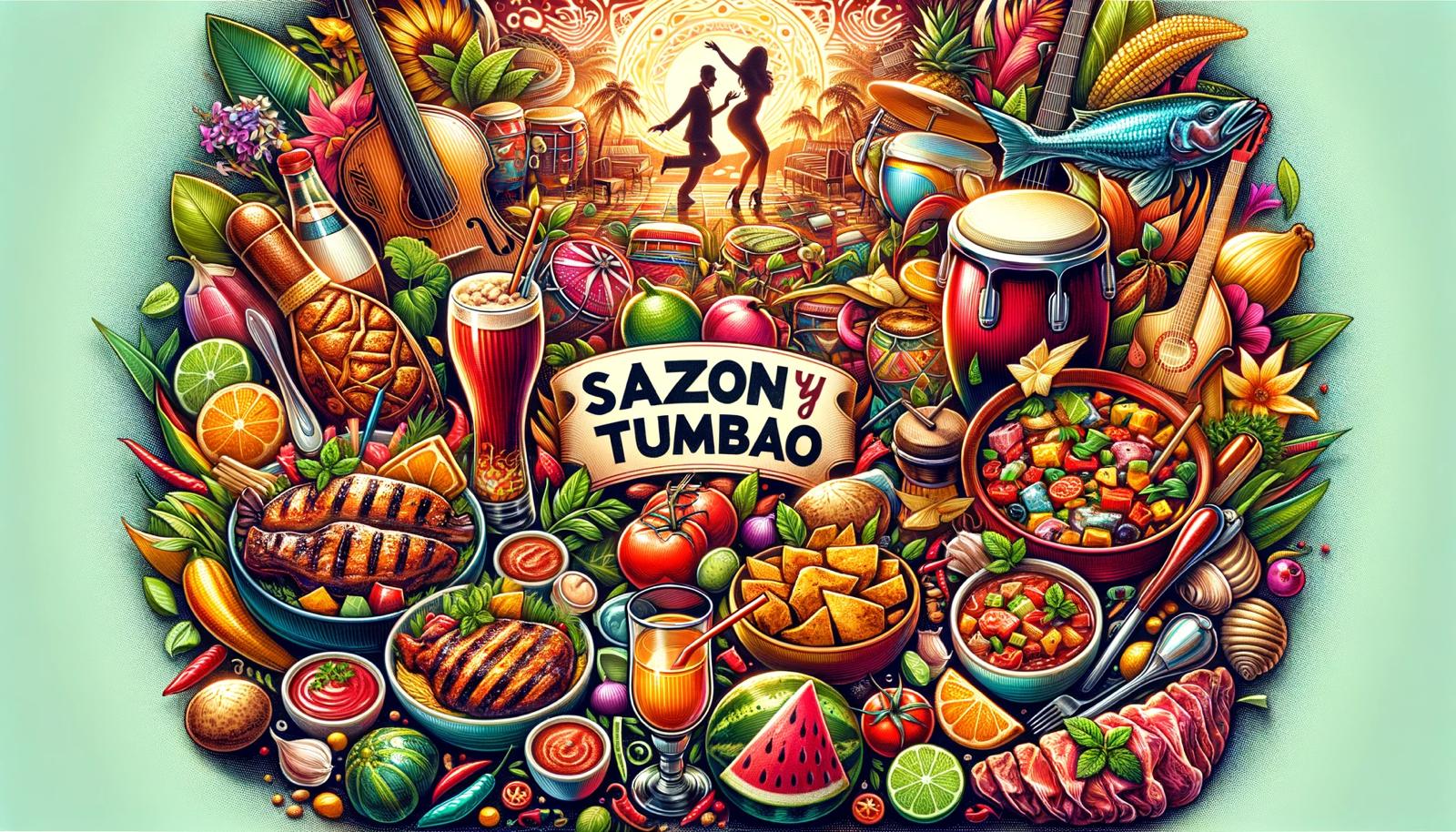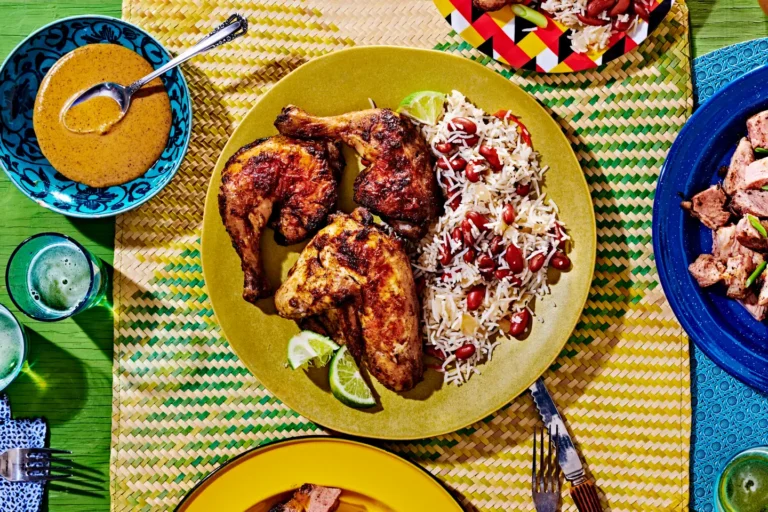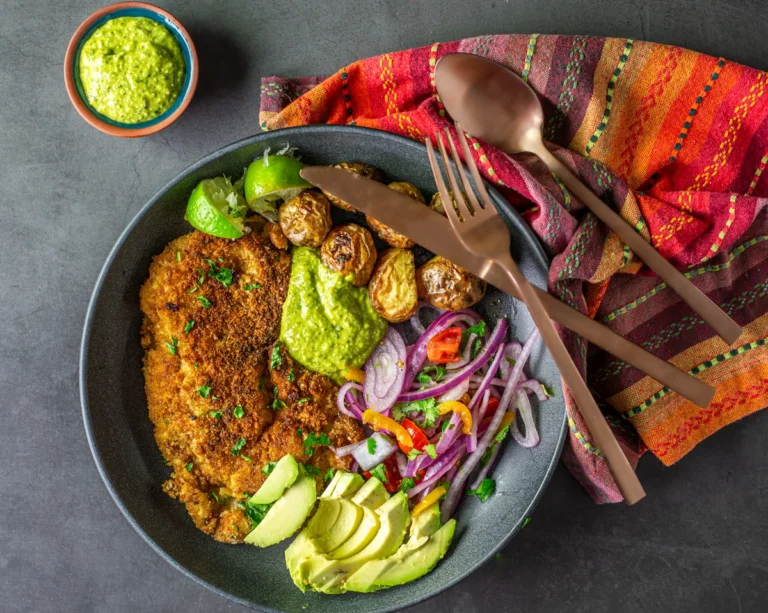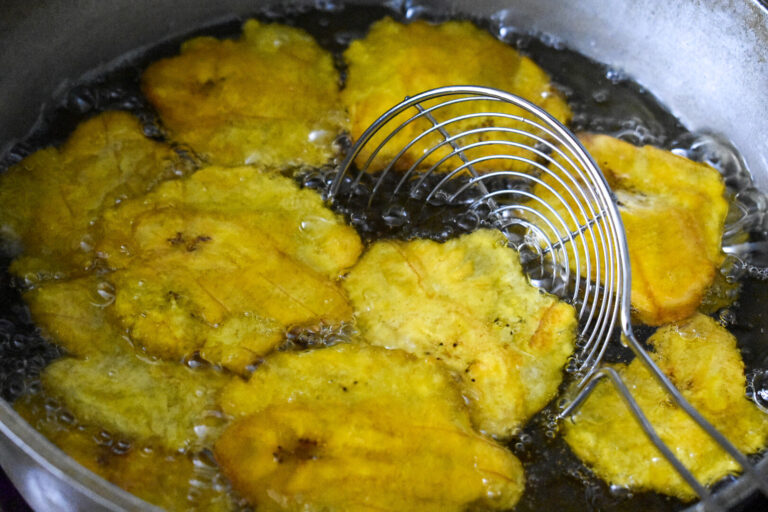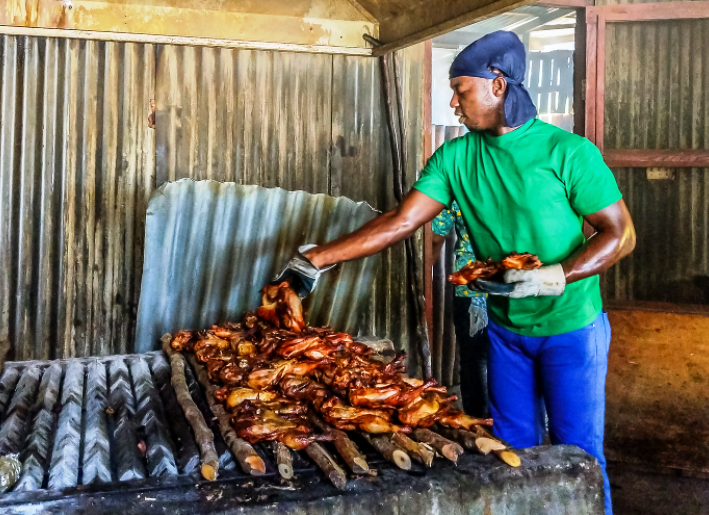Mofongo and Tostones are two of the most beloved dishes in Caribbean cuisine, especially in Puerto Rico and the Dominican Republic. While both are made from green plantains, they are prepared differently and offer unique textures and flavors. Mofongo is a hearty, mashed dish often combined with garlic, pork, and broth, while Tostones are twice-fried, crispy plantain slices, perfect as a side or snack.

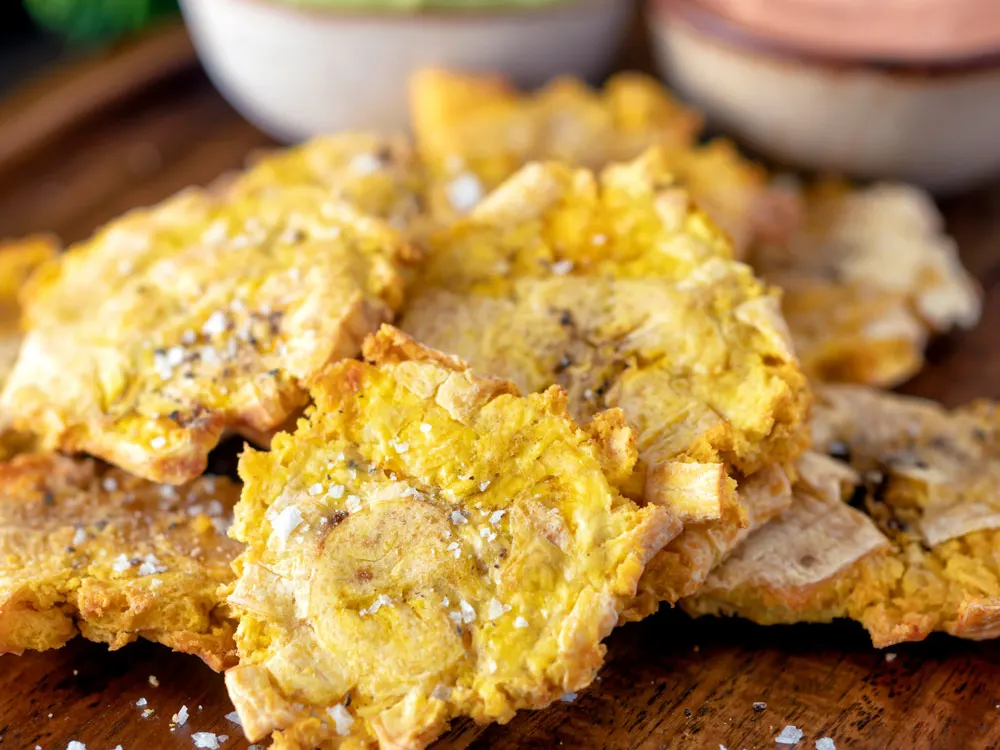
These two dishes might seem similar at first, but they have distinct characteristics, origins, and best uses in cooking. Whether you’re a home cook curious about adding a Caribbean flair to your meals or just looking to understand the key differences, this guide will walk you through everything you need to know.
By the end of this article, you’ll not only know what sets Mofongo and Tostones apart but also when and how to use each one in your kitchen. Let’s dive in!
What is Mofongo?
Mofongo is a traditional Puerto Rican dish made from green plantains, which are fried, mashed, and then mixed with garlic, pork cracklings (chicharrón), and broth. It’s a filling and flavorful dish that serves as the perfect base for a variety of toppings and stuffings like seafood, chicken, or vegetables.
Mofongo’s appeal comes from its dense, savory texture and the rich flavors imparted by the garlic and pork. While its preparation might seem simple, the balance of ingredients and the method used to mash and mix the plantains makes all the difference. Mofongo can be served as a main dish or as a side, often paired with a rich broth or stews for added moisture and depth.
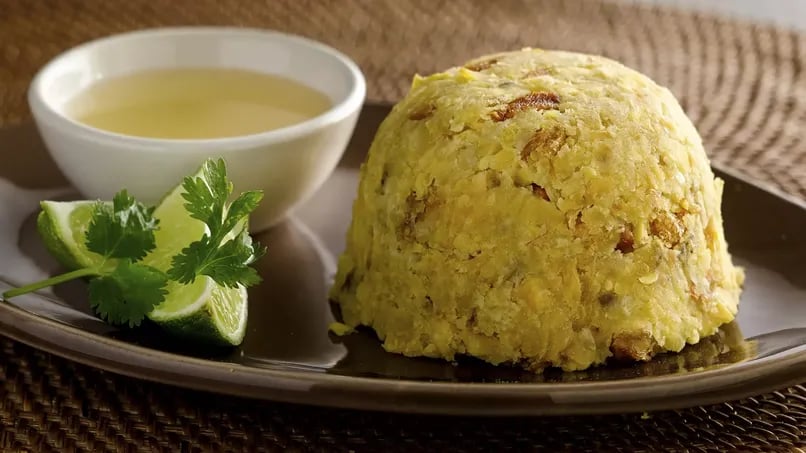
Now that you know the basics of what Mofongo is, let’s take a look at its origins and how this dish became a staple in Puerto Rican cuisine.
The Origins of Mofongo
Mofongo has its roots in Puerto Rican cuisine, but its story begins with a blend of African, Taino, and Spanish influences. The dish is believed to be an adaptation of the African dish fufu, which is made by pounding starchy vegetables like yams or cassava. Enslaved Africans brought the technique of mashing food with them to the Caribbean, and in Puerto Rico, plantains became the starchy base of choice. Over time, Mofongo evolved, incorporating local ingredients like garlic, pork, and herbs, reflecting the rich, diverse cultural heritage of the island.
Today, Mofongo is considered a quintessential Puerto Rican dish, though it can also be found in variations across other Caribbean nations. Its rise in popularity is not only a tribute to its flavor but also to the way it represents the fusion of cultures in Puerto Rican cuisine.
Traditional Ingredients Used in Mofongo
The core ingredients of Mofongo are simple yet flavorful:
- Green plantains: The star of the dish, green plantains are fried until golden and then mashed. Their starchy texture creates the foundation for the dish’s dense and hearty consistency.
- Garlic: Essential for adding a pungent, aromatic flavor, garlic is often mashed into the plantains for an added kick.
- Pork cracklings (chicharrón): Fried pork skins add a crispy, salty contrast to the soft plantains, making the dish rich and savory.
- Broth: A light broth (usually chicken or vegetable) is used to moisten the dish and bring everything together, creating a balance between the mashed plantains and the crispy pork.
These ingredients can be modified to suit individual tastes, but the traditional combination remains popular because of its balanced flavors and textures.
How Mofongo is Prepared: Step-by-Step Guide
Here’s a simple, step-by-step guide to making traditional Mofongo:
- Peel and slice the plantains: Start by peeling green plantains and cutting them into thick slices.
- Fry the plantains: In a deep pan, heat oil and fry the plantain slices until they’re golden brown and cooked through. This step is crucial for creating the crispy exterior and soft interior that Mofongo is known for.
- Mash the plantains: After frying, the plantains are mashed in a mortar and pestle (or a bowl if you don’t have one). As you mash, add garlic, pork cracklings, and a bit of broth to bind the mixture together. The goal is to create a dense but moist mash.
- Form the Mofongo: Shape the mashed plantains into a mound or ball and place them on a plate. It can be served as-is or topped with meat, seafood, or a vegetable-based sauce.
- Serve with broth: Mofongo is traditionally served with a side of broth or as an accompaniment to a stew, which helps add moisture to the dense dish.
Variations of Mofongo
Though traditional Mofongo is already a flavorful dish, there are several popular variations that cater to different tastes and dietary preferences. Let’s take a closer look at some of the most beloved types:
Mofongo Relleno (Stuffed Mofongo)
Mofongo Relleno, or stuffed Mofongo, is perhaps the most popular variation of this dish. After the plantains are mashed, a hollow is made in the center of the Mofongo to hold various fillings. These can include shrimp, chicken, pork, or beef, making the dish heartier and more indulgent. The stuffing adds an extra layer of flavor and texture, making it a favorite in Puerto Rican restaurants.
Seafood Mofongo
This variation uses seafood—such as shrimp, lobster, or crab—as either a topping or stuffing. The briny, sweet flavors of seafood pair perfectly with the garlicky, savory base of Mofongo. Often served with a side of rich creole sauce or garlic butter, Seafood Mofongo is a popular choice in coastal areas and is a true representation of Puerto Rico’s love for the ocean’s bounty.
Vegetarian Mofongo
For those who don’t eat meat, Vegetarian Mofongo offers a plant-based alternative. Instead of pork cracklings, the mashed plantains are mixed with sautéed vegetables such as bell peppers, onions, and mushrooms. A broth or sauce made from vegetable stock adds flavor and moisture, making this variation just as hearty and satisfying as the traditional version.
What is Tostones?
Tostones are another staple of Caribbean cuisine, made from green plantains, just like Mofongo. However, instead of being mashed, the plantains are sliced, fried, flattened, and fried again until crispy. This double-frying method gives Tostones their signature crunch, making them a popular side dish or snack throughout Latin America.
Unlike the rich, dense texture of Mofongo, Tostones are light and crunchy, often served with a sprinkle of salt or accompanied by dipping sauces like garlic sauce or mojo. They’re simple yet satisfying and are a go-to dish for anyone looking for a quick and tasty plantain recipe. Tostones are especially popular in Puerto Rico, Cuba, and the Dominican Republic, where each country has its own twist on the preparation and serving styles.

A Brief History of Tostones
The history of Tostones is rooted in the culinary traditions of the Caribbean, particularly in countries like Puerto Rico, Cuba, and the Dominican Republic. The practice of frying plantains twice likely has its origins in African cooking methods brought to the Caribbean by enslaved people. Over time, Tostones became a beloved dish across Latin America, particularly in regions where plantains grow abundantly.
Though Tostones are now seen as a common side dish, their history is deeply tied to the fusion of African, Taino, and Spanish culinary influences in the Caribbean. Today, they are an essential part of Latin American cuisine, representing a simple but flavorful dish that can be enjoyed on its own or as an accompaniment to a main meal.
Common Ingredients in Tostones
The ingredients for Tostones are straightforward, highlighting the simplicity of the dish. The basic recipe calls for:
- Green plantains: The star ingredient. Green plantains are firm and starchy, making them perfect for frying. Their neutral flavor allows them to take on seasonings and sauces well.
- Oil: For frying, typically a neutral oil like vegetable or canola oil is used.
- Salt: A sprinkle of salt after frying brings out the flavor of the Tostones, giving them a satisfying crunch and a bit of seasoning.
Some variations may include a garlic dipping sauce or mojo sauce (a tangy citrus and garlic sauce), which adds an extra layer of flavor to the crisp plantains.
Tostones Cooking Method: From Plantain to Crunch
The preparation of Tostones involves a simple but effective technique that results in their characteristic crispiness. Here’s how it’s done:
- Peel and slice the plantains: The green plantains are peeled and sliced into thick rounds. These rounds will be fried twice to get the perfect texture.
- First fry: In a pan with hot oil, fry the plantain slices until they turn light golden brown. This initial fry softens the plantains so they can be flattened easily.
- Flatten the plantains: Once fried, the plantains are removed from the oil and flattened using a tostonera (a plantain press) or the back of a flat object like a glass. This step gives the plantains their distinctive shape.
- Second fry: After flattening, the plantains go back into the hot oil for a second fry until they become crispy and golden brown.
- Season and serve: Finally, sprinkle them with salt and serve them hot. They are best enjoyed fresh, with a crispy exterior and a soft, starchy interior.
Different Types of Tostones Across Cultures
Tostones may have the same base recipe across different regions, but each country adds its own unique touch. Let’s explore how Tostones differ across Cuban, Puerto Rican, and Dominican cultures.
Cuban Tostones
In Cuba, Tostones are typically served as a side dish with meats or seafood. Cuban Tostones are often paired with mojo sauce, a zesty mix of garlic, lime juice, and olive oil, which adds a tangy flavor to the crunchy plantains. The double-frying method remains the same, but the sauces and seasonings vary depending on the region.
Puerto Rican Tostones
In Puerto Rico, Tostones are commonly served as an appetizer or alongside main dishes like arroz con habichuelas (rice and beans) or lechón (roast pork). While the basic frying process is the same, Puerto Rican Tostones are sometimes dipped in garlic-infused oil or served with mayo-ketchup, a popular dipping sauce made from a blend of mayonnaise and ketchup.
Dominican Tostones
Dominican Tostones are similar to their Puerto Rican and Cuban counterparts but are often enjoyed with a generous sprinkle of salt and served with hearty Dominican stews like sancocho. Some variations also include a dipping sauce made from garlic and vinegar, offering a sharp contrast to the mild plantain flavor.
Comparing Mofongo and Tostones: What Makes Them Different?
Although both Mofongo and Tostones are made from green plantains, they differ greatly in texture, flavor, and preparation. Understanding these differences can help you decide when to use each dish in your cooking or dining experiences. Let’s break down the key differences between these two plantain-based classics.

Textural Differences
One of the most noticeable differences between Mofongo and Tostones is their texture. Mofongo is mashed, creating a dense and somewhat chewy consistency, especially when combined with broth or other moist ingredients. The plantains are fried first but are softened and mashed, resulting in a hearty texture that holds up well to rich sauces and stews.
On the other hand, Tostones are crispy and crunchy. Thanks to the double-frying method, Tostones have a light, brittle texture, which makes them perfect for dipping into sauces or serving as a crisp side dish. While both are made from fried plantains, the flattening and frying process gives Tostones a completely different mouthfeel than Mofongo.
Taste Profile Comparison
When it comes to flavor, Mofongo is rich, garlicky, and savory. The mashed plantains absorb the flavors of garlic, pork cracklings, and broth, resulting in a deeply flavorful dish that can be customized with different toppings or stuffings. The combination of these ingredients creates a bold, intense taste that is both hearty and satisfying.
Tostones, on the other hand, are simpler in flavor, with a slight sweetness from the plantains but mainly offering a salty and crispy taste. Since Tostones are usually seasoned with just salt, their flavor is more neutral, making them versatile for pairing with a wide variety of sauces, meats, or seafood.
Serving Styles and Pairings
Mofongo is often served as a main dish, especially when stuffed with meats, seafood, or vegetables. It can also be paired with a broth or stew, which helps moisten the dense plantain mash. You’ll typically find Mofongo served alongside rich, flavorful dishes such as pollo guisado (stewed chicken) or camarones al ajillo (garlic shrimp).
In contrast, Tostones are usually served as a side dish or snack. They pair well with a variety of dishes, from grilled meats to seafood, and are commonly enjoyed with dipping sauces like mojo (garlic sauce) or mayo-ketchup. Tostones are a crunchy complement to heavier dishes and can also be enjoyed as a stand-alone snack.
Nutritional Differences Between Mofongo and Tostones
When comparing the nutritional content of Mofongo and Tostones, the preparation methods play a significant role. Mofongo, because of its ingredients, tends to be higher in calories and fat. The addition of pork cracklings and broth can increase its fat content, making it a more indulgent dish. However, Mofongo can be customized with lean proteins or vegetables to create a healthier version.
Tostones, on the other hand, are lighter but still fried. They are generally lower in fat compared to Mofongo, but because they are fried twice, they still carry a moderate amount of calories. For a lighter option, some people choose to bake Tostones instead of frying them, which reduces the fat content without sacrificing too much of the crispiness.
When to Use Mofongo or Tostones in a Dish
Choosing between Mofongo and Tostones often depends on the type of meal you’re preparing, the flavors you’re looking for, and the overall feel of the dish. Both have their place in a well-rounded menu, but their distinct textures and flavors make them suited for different situations. Let’s break down when and why you might choose one over the other.
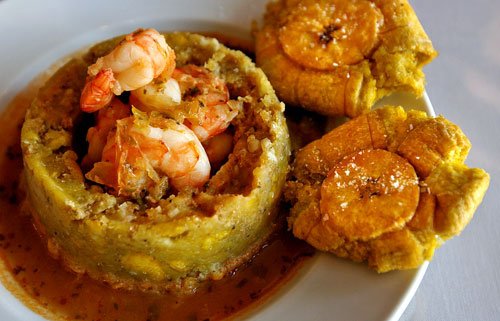
Best Situations for Using Mofongo
Mofongo is an excellent choice when you’re looking for a hearty, filling dish that can stand as a main course or a substantial side. Its mashed texture pairs well with rich, saucy dishes. Here are some great times to use Mofongo:
- As a main course: Mofongo can be the star of the meal, especially when stuffed with meats like shrimp, chicken, or pork. It’s particularly well-suited to savory, garlicky broths or stews.
- When serving stews or braised dishes: Mofongo works beautifully as a side to dishes like pollo guisado (stewed chicken) or ropa vieja (shredded beef), as its dense texture soaks up all the rich, flavorful juices.
- For special occasions: Because Mofongo can be prepared with a variety of toppings and fillings, it’s often seen as a more elaborate dish, making it perfect for celebrations or when you want to impress guests with something authentically Caribbean.
When to Opt for Tostones
Tostones are best used when you need a crispy, versatile side dish that adds texture to your meal. They’re light, crunchy, and can complement a variety of flavors without overpowering the main dish. Here’s when to opt for Tostones:
- As a side to grilled meats or seafood: Tostones offer a great contrast to the bold, juicy flavors of grilled proteins like bistec (steak) or grilled fish.
- As an appetizer or snack: Tostones are a favorite as a snack or appetizer, often served with dipping sauces like mojo or mayo-ketchup. Their crunchy texture makes them an easy-to-eat finger food.
- For a lighter accompaniment: When you want something crispy but not as filling as Mofongo, Tostones are a perfect option. They’re light and neutral enough to serve with heavier dishes, without making the meal too rich.
Which One is Healthier: Mofongo or Tostones?
When it comes to health considerations, Tostones may have a slight edge over Mofongo, but it really depends on how each dish is prepared.
- Mofongo is denser and often made with pork cracklings, which add extra fat and calories. However, you can make Mofongo healthier by using less oil and replacing the pork with vegetables or lean proteins. The addition of broth also adds sodium, so if you’re watching your salt intake, consider using a lower-sodium broth.
- Tostones, being fried twice, also contain their fair share of calories and fat. However, if you’re looking for a lighter alternative, baked Tostones can be a healthier option while still offering that desired crunch.
Both dishes can fit into a balanced diet, but modifying the ingredients and cooking methods can help make them healthier depending on your dietary needs.
Flavor Combinations and Pairing Recommendations
Mofongo pairs well with bold, flavorful meats and seafood. Here are some pairing suggestions:
- Shrimp in garlic sauce: The richness of garlic shrimp complements the savory, dense texture of Mofongo beautifully.
- Roast pork: A traditional pairing, especially in Puerto Rico, where the savory pork highlights the garlicky undertones of the dish.
- Vegetarian stews: For a lighter option, Mofongo can be paired with rich vegetable-based stews, which still provide plenty of flavor without being too heavy.
Tostones, being more neutral in flavor, work well with a variety of dishes:
- Grilled chicken or steak: The crispiness of Tostones balances out the juicy, tender texture of grilled meats.
- Fish: Whether fried or grilled, fish pairs well with the light, salty crunch of Tostones.
- Dipping sauces: Garlic-based mojo or mayo-ketchup adds a burst of flavor to Tostones without overpowering their simple, crispy texture.
By understanding the strengths of both Mofongo and Tostones, you can make better choices in the kitchen, creating well-rounded meals that highlight the best of Caribbean flavors and textures.
Exploring the Cultural Significance of Mofongo and Tostones
Both Mofongo and Tostones are not just popular dishes in the Caribbean—they also carry deep cultural significance, reflecting the rich history and diverse influences that have shaped Caribbean cuisine. From African roots to modern-day culinary staples, these dishes tell a story about the people and traditions of the region.
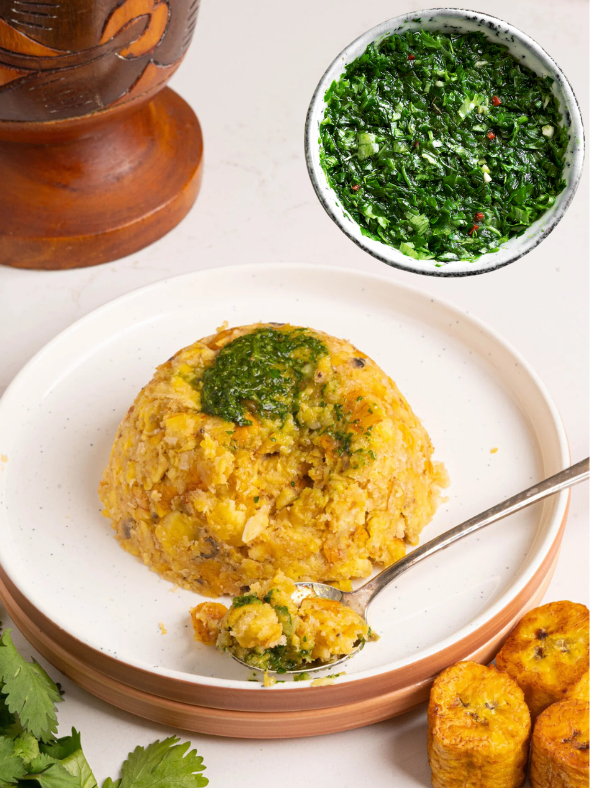

Mofongo
- Cultural Significance: Mofongo is a symbol of Puerto Rican history and culinary evolution.
- Origins: The dish has roots in African cuisine but has evolved to incorporate Taino and Spanish influences.
- Comfort Food: Often considered a comfort dish, Mofongo brings people together for family dinners and celebrations.
- Versatility: It can be customized with various toppings and fillings, making it a favorite across the island.
- Cultural Heritage: For many Puerto Ricans, Mofongo is a reminder of their cultural heritage and a taste of home.
Tostones
- Culinary Role: Tostones are popular not only in Puerto Rico but also in other Latin American countries like Cuba and the Dominican Republic.
- Preparation: Made from green plantains that are sliced, fried, flattened, and fried again until crispy.
- Cultural Variations: Each country has its own version; for example, they are served with dishes like ropa vieja in Cuba and sancocho in the Dominican Republic.
- Versatility: Tostones are a common side dish that pairs well with various main courses, reflecting their widespread appeal.
- Cultural Heritage: They embody the shared culinary traditions of the Caribbean, showcasing the resourcefulness of its cooks.
Shared Elements
- Caribbean Identity: Both Mofongo and Tostones reflect the fusion of African, indigenous, and European influences in Caribbean cuisine.
- Use of Plantains: Both dishes highlight the importance of plantains as a staple ingredient in the region.
- Historical Roots: Mofongo’s preparation techniques can be traced back to African culinary practices, while Tostones represent the adaptability of Caribbean cuisine.
- Culinary Connection: Together, they connect modern culinary practices to centuries of history and cultural exchange in the Caribbean.
Both dishes are a reflection of the resourcefulness and flavor traditions of the Caribbean, connecting modern-day cuisine with centuries of history and cultural exchange. Whether served in a bustling market or a fine dining restaurant, Mofongo and Tostones continue to represent the heart and soul of Caribbean cooking.
Frequently Asked Questions
Conclusion: Mofongo or Tostones – Which Should You Choose?
Both Mofongo and Tostones are delicious, versatile dishes that offer different textures and flavors, making them suited to various meals and occasions. If you’re looking for something hearty and savory with bold flavors, Mofongo is the way to go. Its dense, mashed consistency and rich garlic and pork flavors make it a great choice for a main dish or a filling side to stews and braised meats.
On the other hand, if you want something light, crispy, and versatile, Tostones are perfect. They work well as a crunchy side dish, a snack, or even as an appetizer with dipping sauces like garlic mojo or mayo-ketchup.
Whether you’re in the mood for something rich and comforting or light and crispy, both dishes have their place in Caribbean cuisine—and in your kitchen. The choice really depends on what you’re craving and how you want to pair them with other dishes.
Final Thoughts on Mofongo vs. Tostones
At the end of the day, there’s no wrong choice between Mofongo and Tostones. Both dishes have their own charm and are integral parts of Caribbean culinary tradition. You can’t go wrong with either—so why not try both and see which one becomes your favorite?
Related Recipes and Resources
If you’re ready to start cooking, here are some recipes to help you make authentic Mofongo and Tostones at home:
- Traditional Mofongo Recipe A step-by-step guide to making classic Mofongo, including tips for variations like Mofongo Relleno or Seafood Mofongo.
- Tostones Recipe Learn how to make crispy, golden Tostones with this easy recipe, including baking and frying methods for different preferences.
Other Plantain-Based Dishes to Try
Explore other Caribbean favorites like Maduros (sweet fried plantains) or Pastelón (plantain lasagna) for more delicious ways to use plantains in your cooking.
Disclosure: Our blog contains affiliate links to products. We may receive a commission for purchases made through these links. However, this does not impact our reviews and comparisons. We try our best to keep things fair and balanced, in order to help you make the best choice for you.
